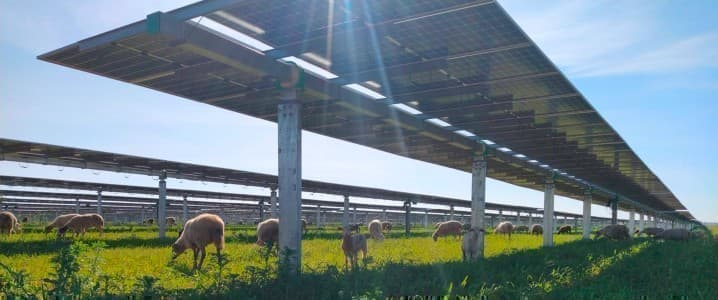The clean energy sector has gone wild with solar stocks enjoying a massive rally after the U.S. Federal Reserve announced that it will keep short-term interest rates unchanged and forecast three cuts next year, a potentially very bullish outlook for 2024. Interest rates have increased sharply over the past few years, going from about half a percentage point during the pandemic to more than 4% recently thanks to the Fed’s tapering program. However, a less hawkish Fed has seen rates reverse. The 10-year treasury yield hit a 16-year high of 4.98% in October but has pulled back to 3.91% currently.
Solar energy stocks have responded strongly because lower interest rates are likely to have a direct impact on volume and margins in 2024. Shares of SunPower (NASDAQ: SPWR) were up 18.6% at 1140 hrs ET in Thursday’s intraday session; Sunrun (NASDAQ: RUN) was up 21.4%, Sunnova Energy (NYSE: NOVA) jumped 16.7% and First Solar (NASDAQ:FSLR) gained 8.9%. Solar market suppliers also saw handsome gains, with Enphase Energy (NASDAQ: ENPH) rising 12.6% and SolarEdge Technologies (NASDAQ: SEDG) climbing 15.0%.
Meanwhile, the solar sector’s popular benchmark Invesco Solar ETF (NYSEARCA:TAN) was up nearly 10%, proving that this tide has lifted all boats.

Source: CNBC
The big jump can be chalked up to the fact that solar installations, especially in the rooftop market, are largely driven by interest rates. Solar customers often sign a 20- to 30-year purchase agreement to buy solar electricity from an installer, usually with no down payment required. The installer then sells off any tax benefits or upfront subsidies and finances those long-term payments just like we do with a mortgage or bond. Rising interest rates makes this financing more expensive and squeezes margins for the installers unless they counter by increasing prices. This is basically what has been ailing the solar sector ever since the Fed started raising interest rates in a bid to bring down inflation. Related: Three Drivers of Negative Sentiment in Natural Gas Right Now
Generally, renewable energy projects tend to be highly sensitive to high interest rates than any other energy sector. Further, the cost of electricity generated from renewable energy rises more rapidly when interest rates increase: the International Energy Agency has found that a 5% rise in interest rates increases the levelized cost of electricity (LCOE) from wind and solar by a full 33% but only marginally for natural gas plants.
With many analysts predicting that the Fed will cut rates three times in 2024, it's suddenly boom time for the solar industry.
Another bumper year?
The U.S. solar sector has been defying high interest rates, with installed capacity increasing 55% Y/Y in the current year to a record 33 GW, mainly driven by robust growth by residential solar and high energy prices.
"The United States is now a dominant player in the global clean energy economy, and states like Florida, Texas, Ohio and Georgia are at the forefront of this job growth and economic prosperity. The solar and storage industry is delivering abundant clean energy that is generating tens of billions of dollars of private investment, and this is just the tip of the iceberg," Abigail Ross Hopper, president and CEO of the Solar Energy Industries Association, declared.
But solar’s popularity really is a global phenomenon. Earlier in the year, the International Energy Association reported that capital investments in the global solar sector were on track to overtake the amount of investment going into oil production for the first time ever.
But according to a recent report by the Solar Energy Industries Association (SEIA) and Wood Mackenzie, the U.S. solar sector will expand at a more modest 10% clip in 2024, mainly hampered by high-interest rates and the net metering policy in California. Well, that report was compiled before the Fed made its latest move, meaning 2024 could be yet another annus mirabilis for the solar sector.
California’s new solar policy could prove problematic for the state, although it’s unlikely to have a big impact on a national level since the state has accounted for less than 10% of installed capacity in the current year. Net Energy Metering 3.0 has cut the value of solar energy credits by 75% in a bid to encourage customers to purchase solar battery storage with their solar system. The new policy has come under heavy criticism by solar equipment manufacturers and Californians who contend that it discourages the adoption of solar and makes it less affordable.
EnergySage has, however, countered by pointing out that the state is still seeing very favorable economics mainly due to increases in electricity rates by utilities which translates into shorter payback periods while solar equipment costs have declined.
By Alex Kimani for Oilprice.com
More Top Reads From Oilprice.com:
- Exxon Reportedly To Mirror Peers with Cash Bonuses for Risk Traders
- China’s EV Sector Will Become Self-Sufficient By 2060
- Oil Traders Turn Bears Fast and Furiously


















